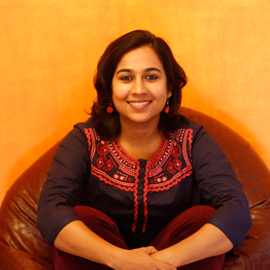Modi@2: Has Beti Bachao Beti Padhao saved and educated India's daughters?

As Modi Sarkaar completes two years, Catch does a round-up of what its impact has been on literacy, the girl child and women empowerment with reactions from the field.
Did you know that there were 58 more more women for every 1000 men in India in 1961 than today?
According to the 2011 census, data shows a significant declining trend in the Child Sex Ratio (CSR),
between age group of 0-6 years. In 1961 there were 976 women for every 1,000 men. Today there are only 918.
Also read - If Narendra Modi has managed to bring Achhe Din for someone, it's the RSS
The Prime Minister launched the Beti Bachao Beti Padhao (BBBP) scheme in January 2015 aiming to encourage the education of girl children by reversing India's declining child sex ratio.
Essentially, a year and half of Beti Bachao Beti Padhao did two things:
a) It unleashed a mass communication campaign
b) It held programme interventions in 100 gender critical districts across India:
These interventions included initiatives like promoting registration of pregnancies in the first trimester, involving gender champions, community mobilisation and sensitisation, universal enrollment of girls, efforts to decrease drop out rates, strengthening Pre-Conception and Pre-Natal diagnostic techniques Act 1994 and increasing monitoring.
"There has definitely been a shift in thinking. The campaign was successful in sending out the correct message. People have begun to think twice before they differentiate between a boy and a girl. But this impact can only be seen among people who have access to media and particularly television. A big part of India lives in total darkness, with no connectivity to news networks. The campaign needs to reach them," says Raja Bhaiya of the Vidya Dham Samiti in Banda district of Bundelkhand.
Haryana, which has seen India's worst gender inequality has also improved.
Sunil Jaglan, the Sarpanch of Bibipur, famous for triggering the viral 'Selfie with Daughter' campaign that the Prime Minister also spoke about in his Mann ki Baat, points that the numbers show an overall improvement even in just the last year and half.
"The infant sex ratio for Haryana used to be around 880 until a few years ago. Today it hovers around 906 per 1000 boys. And these are 2015 figures. Give this push another 10 years and see what impact it can bring about," Jaglan tells Catch.
Also read -Modi@2: 24 months, 24 controversies that have caught the public eye
"To make people unlearn patriarchy is like teaching them the Bhagawad Gita. It needs to be brought into school curriculum dedicatedly and repeatedly so that it is really imbibed. Just saving a day as daughter's day or girl child day as part of BBBP won't help," says Jaglan who believes that gender equality needs a separate team of people working dedicatedly on it.
"The Women and Child Development ministry have too much on their hands to fight patriarchy and put in the effort it needs to empower women. This needs a separate task force," says Jaglan who explains that women who give birth to a girl child as their first child need to be actively monitored when they are carrying their second child.
The caste issue remains
What activists on the ground believe is that not enough is being done to tackle caste as a barrier to women's empowerment. The schemes that exist, they say are unheard of on the ground.
The Modi government launched a gamut of other schemes targetting women belonging to socially backward castes. The Stand Up India programme for instance, provides easy funding to Dalit and female entrepreneurs.
Some of the recent schemes include Nai Manzil, a skill development scheme for girls belonging to minority communities; Mahila-e-Haat, launched to promote female entrepreneurs; and the draft national policy for women, launched last week, which focuses on reproductive rights and recognises the rights of single women.
"There is so much money being pumped into crafting each of these schemes and advertising for them. But hardly a drop of it actually reaches the disempowered woman," argues activist Jagmati Sangwan based in Haryana.
"In Banda, nobody has heard of these schemes. How can you avail the benefits of something when you don't even know it exists?" asks Raja Bhaiya.
Sangwan says that some efforts in the name of empowering women actually hurt their progress. Take the case of the decision to only allow women who are 10th grade pass outs (for general women) and 5th grade pass outs (for Dalit women) to contest in Panchayat elections. Or the condition that all of them should have constructed toilets in their homes. "This straight away means 83 % of the women don't get to contest in Panchayat elections. What sort of empowerment is this?" asks Sangwan
Sangwan also says that if the Prime Minister was really serious about Beti Bachao Beti Padhao he would have the guts to stand up against Haryana's Khap. But he chose to say "khap bhoomi ko naman karta hoon"or "My salutations to the Khap Land". The message seems to be, Beti Bachao Beti Padhao has made a good beginning. But can it be emboldened enough to axe the alpha males of patriarchy?
Also read - Arun Shourie demolishes Modi's 2 year rule: 10 key points
First published: 24 May 2016, 9:27 IST





![BJP's Kapil Mishra recreates Shankar Mahadevan’s ‘Breathless’ song to highlight Delhi pollution [WATCH] BJP's Kapil Mishra recreates Shankar Mahadevan’s ‘Breathless’ song to highlight Delhi pollution [WATCH]](https://images.catchnews.com/upload/2022/11/03/kapil-mishra_240884_300x172.png)

![Anupam Kher shares pictures of his toned body on 67th birthday [MUST SEE] Anupam Kher shares pictures of his toned body on 67th birthday [MUST SEE]](https://images.catchnews.com/upload/2022/03/07/Anupam_kher_231145_300x172.jpg)






